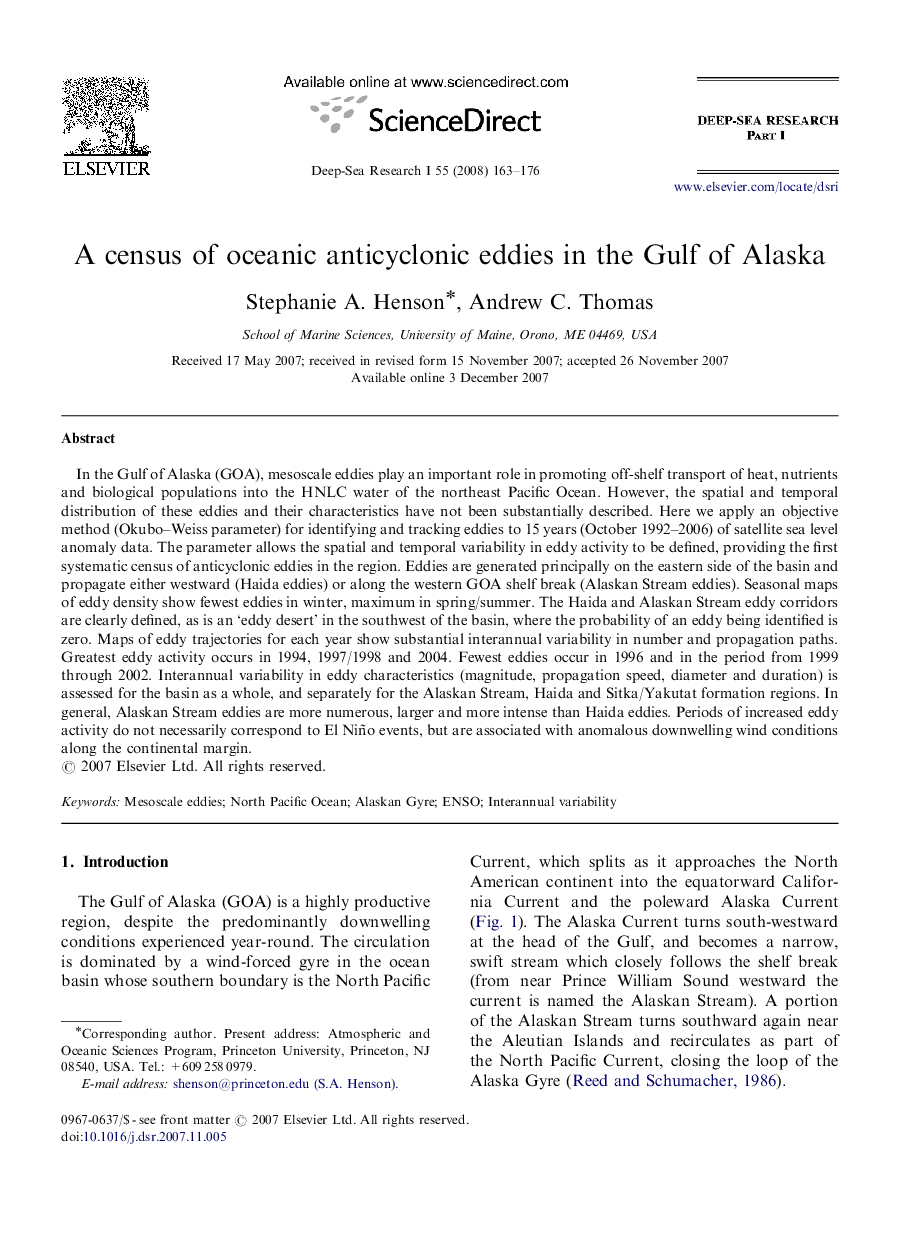| کد مقاله | کد نشریه | سال انتشار | مقاله انگلیسی | نسخه تمام متن |
|---|---|---|---|---|
| 4535469 | 1326109 | 2008 | 14 صفحه PDF | دانلود رایگان |

In the Gulf of Alaska (GOA), mesoscale eddies play an important role in promoting off-shelf transport of heat, nutrients and biological populations into the HNLC water of the northeast Pacific Ocean. However, the spatial and temporal distribution of these eddies and their characteristics have not been substantially described. Here we apply an objective method (Okubo–Weiss parameter) for identifying and tracking eddies to 15 years (October 1992–2006) of satellite sea level anomaly data. The parameter allows the spatial and temporal variability in eddy activity to be defined, providing the first systematic census of anticyclonic eddies in the region. Eddies are generated principally on the eastern side of the basin and propagate either westward (Haida eddies) or along the western GOA shelf break (Alaskan Stream eddies). Seasonal maps of eddy density show fewest eddies in winter, maximum in spring/summer. The Haida and Alaskan Stream eddy corridors are clearly defined, as is an ‘eddy desert’ in the southwest of the basin, where the probability of an eddy being identified is zero. Maps of eddy trajectories for each year show substantial interannual variability in number and propagation paths. Greatest eddy activity occurs in 1994, 1997/1998 and 2004. Fewest eddies occur in 1996 and in the period from 1999 through 2002. Interannual variability in eddy characteristics (magnitude, propagation speed, diameter and duration) is assessed for the basin as a whole, and separately for the Alaskan Stream, Haida and Sitka/Yakutat formation regions. In general, Alaskan Stream eddies are more numerous, larger and more intense than Haida eddies. Periods of increased eddy activity do not necessarily correspond to El Niño events, but are associated with anomalous downwelling wind conditions along the continental margin.
Journal: Deep Sea Research Part I: Oceanographic Research Papers - Volume 55, Issue 2, February 2008, Pages 163–176